The Manyingani clan of hyenas has clearly picked up and moved to a new, as yet undetermined location. We installed a trail cam (a small motion-activated, infrared flash still/video camera) at the den on the morning of August 31 and over 2 days there was only one hyena captured, possibly a male looking for a new clan to join after being kicked out of its natal clan (this is one interesting aspect of hyena society and helps maintain genetic diversity).
This more or less confirms that this den has been abandoned. Since then we have been focusing on the site of the elephant carcass, and have observed hyenas there on two nights, but it is not a great location to observe the clan dynamics - although I was able to confirm that at least 3 of the individuals there were also seen previously at the Mayingani den. We have been searching around places where hyena have been observed by others for another den, so far without success. In fact, it has been 2 days since we have seen any hyenas - in spite of hearing them nightly, sometimes it seems very close to camp (along with jackal and what I believe to be leopard sounds).
So, today I offer a different slice of the beauty of Pafuri: the fever tree forest. I’m no expert on the biology, but the story about the origin of the name is that these trees rely on occasional flooding to spread their seeds, and so the location is often coincident with breeding grounds for mosquitoes, which can carry malaria. Hence wherever the fever tree forests are located, people can get sick with malaria. Anyway the color of the bark and the way it reflects the early morning or late afternoon sun is mystical, ethereal and sometimes surreal, and provide an unrivaled backdrop for wildlife. Here are a few pictures I’ve taken over the last few days, I hope you enjoy them.




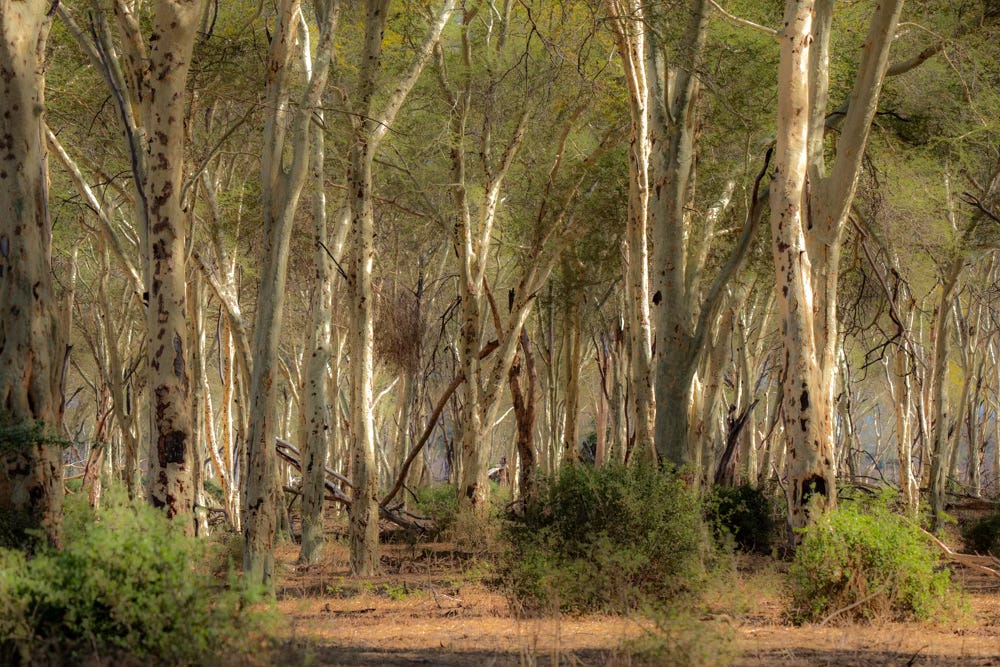
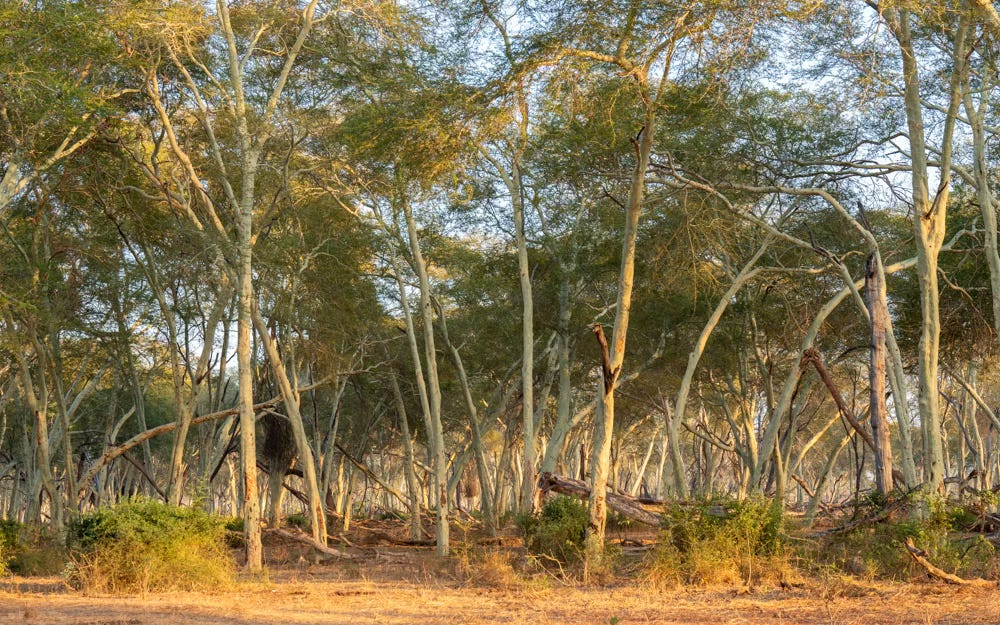

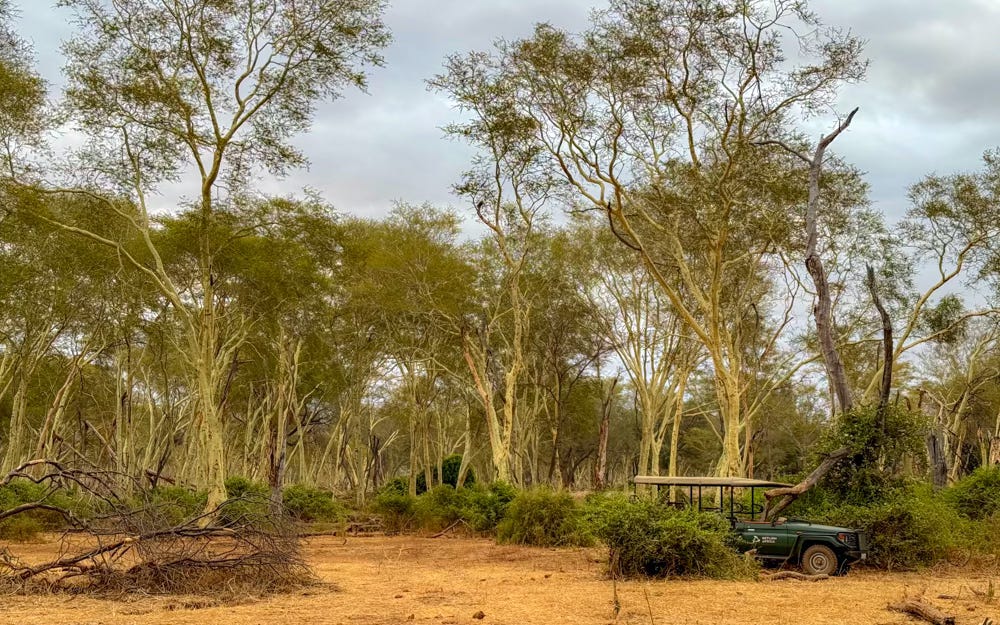
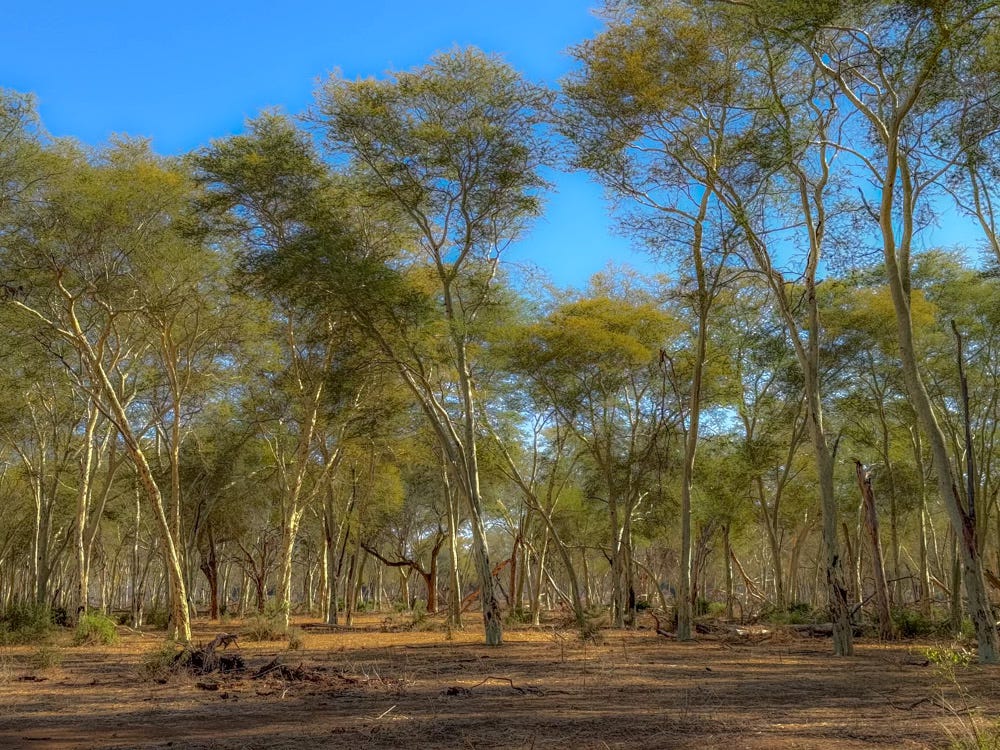
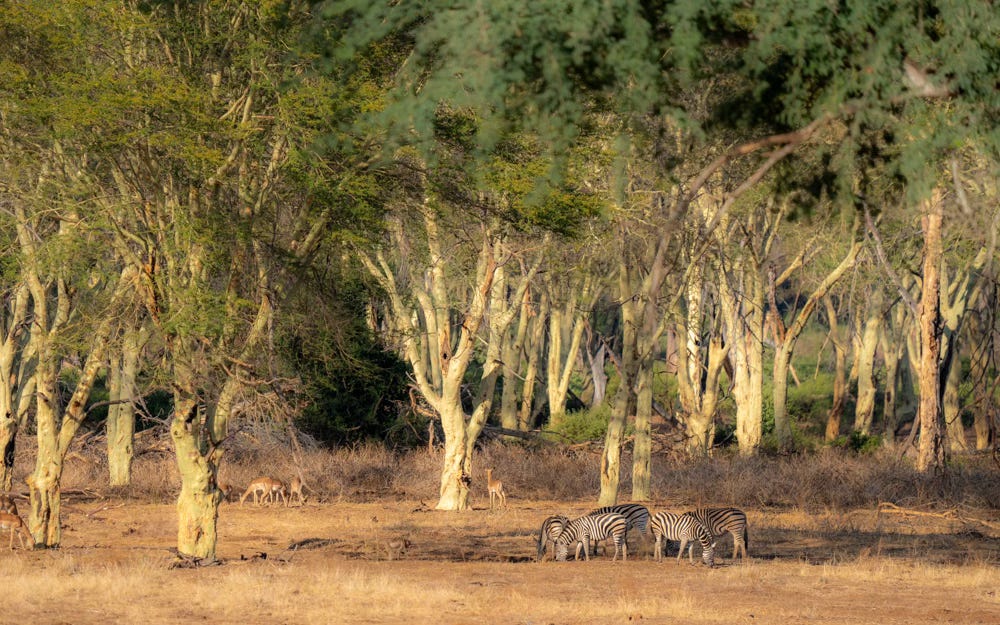
So you’re taking those malaria pills, right?